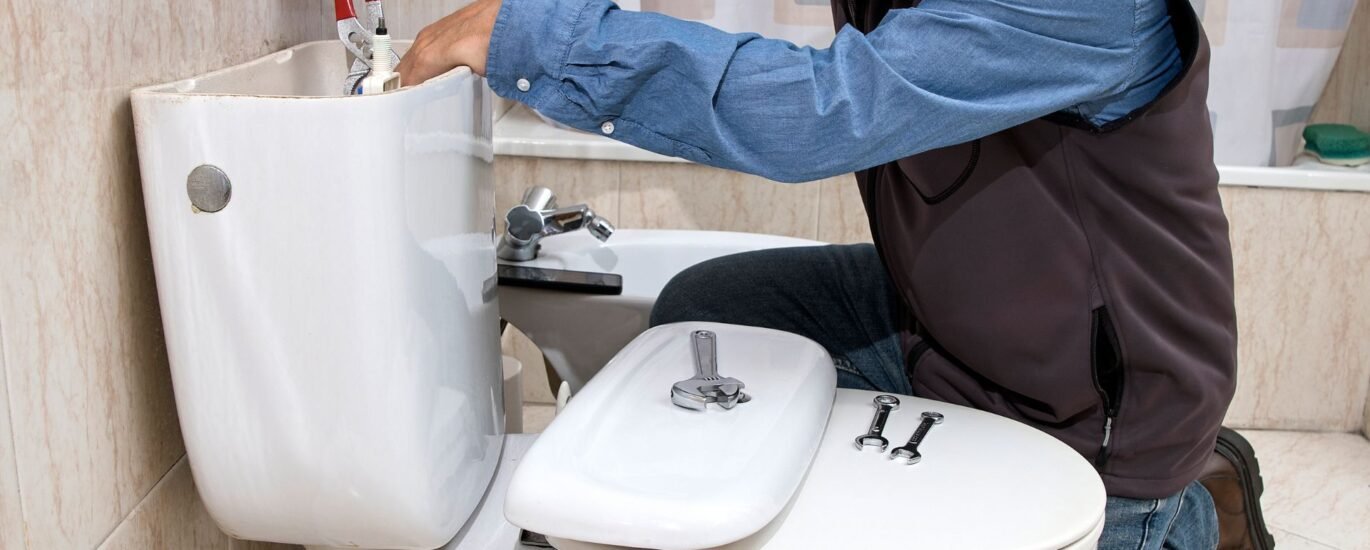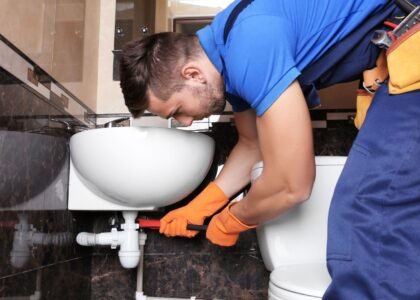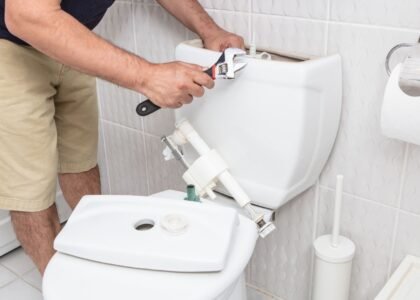If you’re dealing with a toilet that’s misbehaving—leaking, dripping, running—you’re not alone. Many San Diego homes experience similar issues. This post gives you a practical, step-by-step approach that you or a plumber can follow to get the toilet working well again. It combines basic DIY checks with what professionals do behind the scenes, so you know what to expect.
Before You Begin: Safety & Preparation
- Turn off the water supply at the valve located near the toilet.
- Flush the toilet to empty most of the water.
- Use towels around the base to catch residual water.
- Have these tools handy: adjustable wrench, screwdriver, sponge, bucket, replacement parts (flapper, fill valve, maybe wax ring).
Step 1: Inspect the Internal Tank Components
A lot of toilet problems start inside the tank:
- Flapper: Is it sealing properly? Do you see warping or mineral buildup?
- Flush valve: Is there water leaking around its seat?
- Fill valve / float: Does the float shut off water when the tank fills? Is water level too high?
- Overflow tube: Is water pouring into it (which causes phantom flushes/running)?
Correcting any of these issues often stops running, phantom flushing, or high water usage.
Step 2: Check the Flush Mechanism Outside the Tank
- Handle and chain: Is the flush handle loose or sticking? Is the chain too long/short?
- Lift arm or rod: If present, inspect for corrosion or misalignment.
Sometimes small adjustments here make a big difference.
Step 3: Inspect the Toilet Base & Seals
- Look for gaps or moisture around the base.
- Rock the toilet gently—if it moves, bolts may be loose or flange may be worn.
- If you remove the toilet, check the wax (or other) ring seal. A faulty seal here causes base leaks.
Step 4: Drain & Vent Path Checks
Slow drainage or gurgling often means clogging or venting issues:
- Use a plunger first.
- Try a toilet auger or snake if needed.
- Check roof vents or plumbing vents for blockage (leaves, nests, etc.).
Step 5: Replace Worn Parts
If inspection shows damage or wear:
- Replace flapper / flush valve to stop running or phantom flushes.
- Replace fill valve if the water fills slowly, continuously, or is noisy.
- Replace wax ring / gasket / flange to stop base leaks.
Make sure replacement parts are proper fit. Poor fit causes recurring problems.
Step 6: Full Toilet Replacement (When Repair Won’t Cut It)
You may conclude that replacement is needed when:
- Cracks are visible in bowl or tank.
- Internal parts are corroded beyond replacement.
- Multiple components have failed and costs approach replacement.
- You want upgraded style or water efficiency.
Read about replacement choices and process in our post: Expert Toilet Repair Services for the San Diego, CA Community.
Step 7: Post-Repair / Installation Testing
After repair or replacement:
- Turn water back on slowly.
- Let tank fill, listen for leaks or continuous running.
- Flush several times to check seal, water level, flush strength.
- Inspect base for moisture.
When to Call Expert Plumbers San Diego
Some situations are best handled by experts, such as:
- Leaks inside walls or under floor where diagnosing without cutting is hard.
- Structural issues (flange damaged, floor rot).
- A unit that’s old and parts are hard to source.
- Repeated problems after repair attempts.
If you need professional diagnostics or repair work, check the services offered: Expert Toilet Repair Services for the San Diego, CA Community and reach out via their contact page here: Contact Expert Plumbers San Diego.
FAQs: Quick Answers
| Question | Answer |
|---|---|
| Why does my toilet run all the time even after replacing the flapper? | It could be the flush valve seat, fill valve issues, or water level too high—other internal components besides the flapper may be failing. |
| What’s causing water around the base of the toilet? | Might be a bad seal (wax ring), loose bolts, cracked flange, or even condensation—but base leaks are often worse than they look. |
| Is a low-flow toilet less likely to clog? | Not necessarily—trapway and flush power matter. Quality low-flow models with good design perform well. |
| How long should toilet parts last? | Varies: flappers and seals may need replacement every few years; fill valves last longer if clean water and low mineral content. Cracks or serious damage may occur unpredictably. |
Final Thoughts
Toilet repair doesn’t have to be a mystery. Many issues are simple: inspect the tank, test the flush, check the base. But some problems go deeper—into plumbing or structural systems—that call for an expert hand. For those tougher cases, or when you just want the job done right, Expert Plumbers San Diego is able to provide reliable toilet repair service in the San Diego community. Learn more about their offerings here: Expert Toilet Repair Services for the San Diego, CA Community or schedule service by visiting their Contact Us page.



